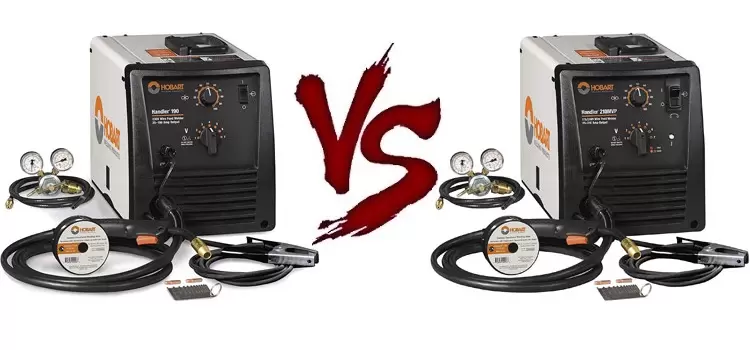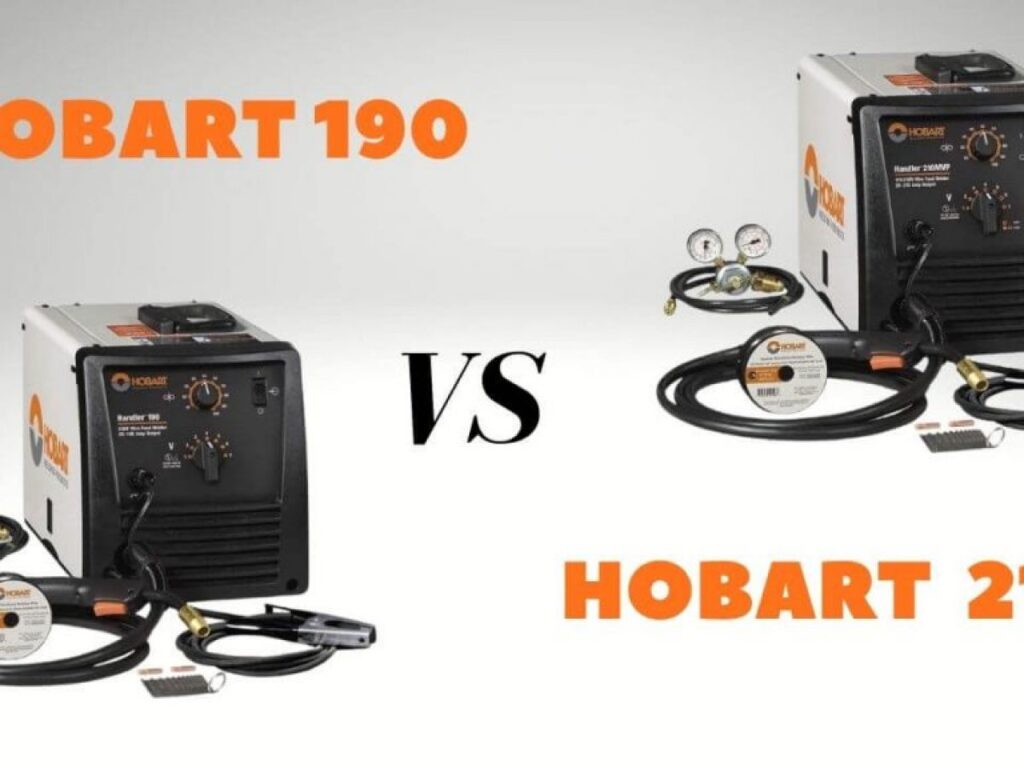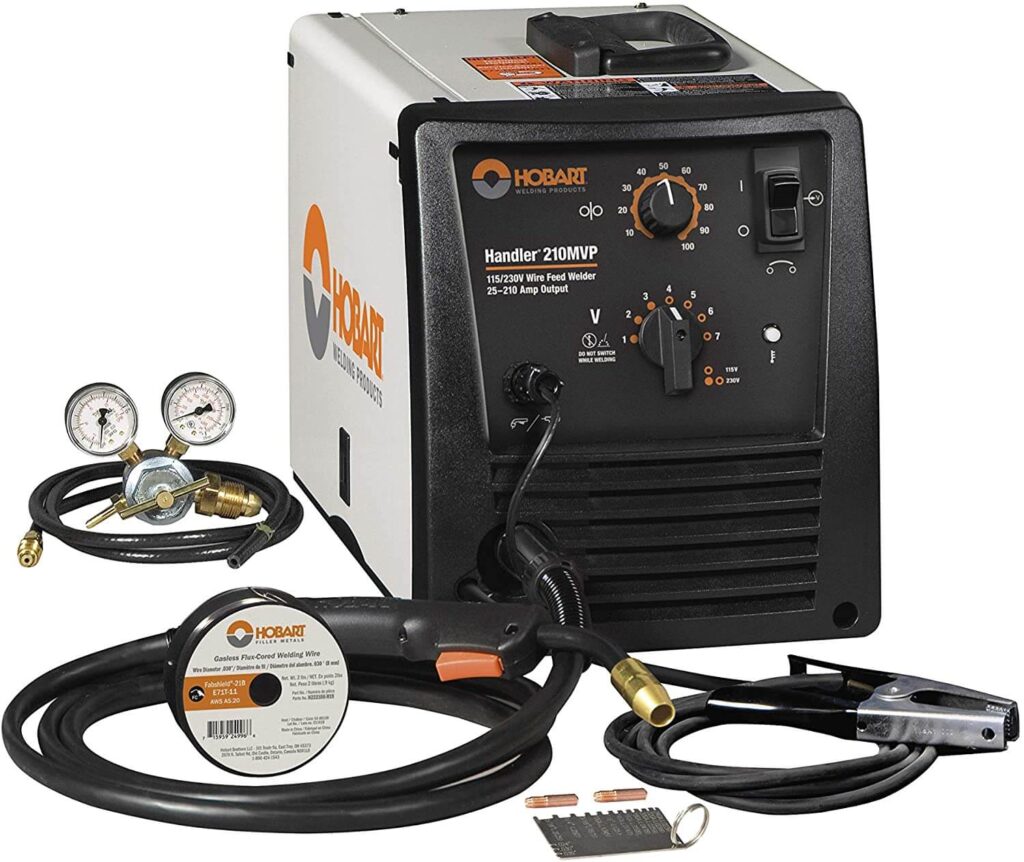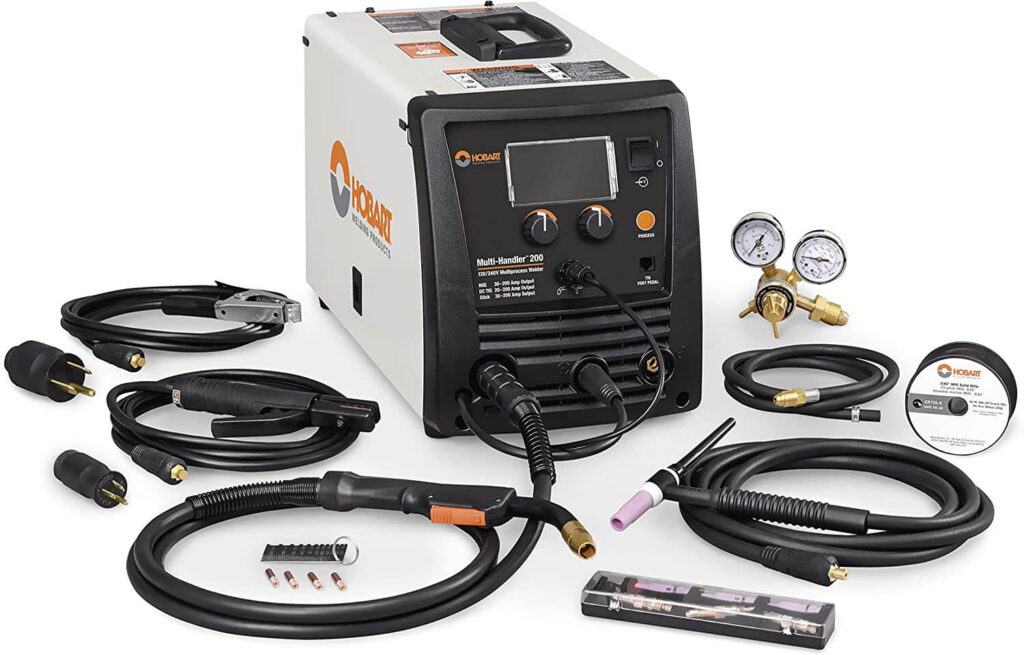Both Hobart 210 and 190 have many similarities since the same manufacturers make them. Their similarities make it hard to know the differences between them when making the comparison. The only way to identify the similarities is by looking closer and observing each place, including the physical appearance, after observing, when comparing and deciding which is the best among the two.
Before comparing the two machines deeper, first, look at the benefits of each device. After looking at the benefits, you will begin noting some differences and similarities.
For instance, the weight differs between the two pieces of equipment. One is much lighter and cannot be used for heavy welding, while the other is heavier. Also, the voltage and power requirements are different.
To make things look more accessible, the article below shows the summary of the two welding metals. It gives their differences and similarities between them. Also, it offers the advantages of each machine over the other, including its features. Finally, it shows the most recommended among the two and why and the FAQs.
Contents
A quick comparison table between Hobart 190 and Hobart 210
| Comparison | Hobart 190 | Hobart 210 |
| Weight | 68 lbs | 79 lbs |
| Ampere output | Ranges from 25 to 190 amperes | Ranges from 25 to 210 amperes |
| Amperage per cycle | 130 amps @ 30% | 150 amps @ 30% and 90 amps @ 20% |
| Voltage | 230 voltage input | 115 to 230 voltage input |
| Thickness | Ranges from 5 to 16 in. | Ranges from 5 to 8 in. |
| Power requirements | Works only for 230 voltages | Functions at 115 to 230 voltages depending on the positions |
Hobart 190 vs. Hobart 210 Welder

- Weight
When it regards both of these Handler devices, welders argue about mobility. With a weight of 68 pounds, the Hobart Handler 190 is technologically more transportable. The Handler 210MVP, by comparison, weighs 79 pounds. For some, the 11-pound difference may be significant.
When you include the MIG gun, ground cable and clamp, and a gas bottle to both units, you’ll almost certainly require a welding cart. Both welders are considered transportable by some welders. However, if you transfer the welder frequently, the system can become cumbersome to handle, weighing in at around 100 pounds.
- Amperage
We always need more power. There is a distinction between these two model welders as well. The Handler 210MVP can deliver power ranging from 25 amperes to 210 amperes, while the Handler 190 can provide power from 25 amperes to 190 amperes.
The 190MVP can weld mild steel up to 5/16-inch-thick, while the 210MVP can weld mild steel up to 38 inches thick. As a result, there is little distinction. However, for certain people, having that extra amperage may be critical.
- Amperage per cycle
If you’re unfamiliar with the term, the amperage cycle represents the maximum amount of time welding equipment can operate. That is before it becomes necessary to take a break. When we compare these two instruments’ operation time and cool-down times, we find them nearly identical.
When you use 115V, the Hobart 210 MVP runs for a couple of minutes, approximately two minutes before sitting for eight minutes. When you set it to 230 volts, it operates for three minutes straight before requiring a seven minutes rest period. In percentage terms, the duty cycle for 11 voltages and 230 voltages is 20 percent and 30 percent, correspondingly.
The Amperage count is 20 percent annual duty cycle at 90 amps and 30% duty cycle at 150 amps if measured in amperage.
Not long behind is the Hobart Handler 190 welder. At 23 voltage or 130 Amperes, it has a duty cycle of 30%. If you increase the amperage to its utmost, the duty cycle lowers to 20%.
- Thickness
It’s essential to stick to the recommended welding thickness of both the welder and the metals. Welding for the Hobart 210 welder thickness ranges from 5 to 8-inch metal beams is possible with the 210.
The welding ability of the Hobart 190 is comparable to that of the Hobart. It can weld 24-gauge sheets up to 5 to 16-inch-thick metal.
- Power requirements
It’s essential to know how much power a welder requires before acquiring one. The Hobart 210 welder is 115 voltages and 230 voltages compatible, featuring four 115 voltage and seven 230 voltage options. The machine’s welding ampere range is between 25 and 140 Ampere on 115 voltages and between 25 and 210 Ampere on 230 voltages.
230 voltages exclusively power the 190. But if you have a generator, you’re out of luck if your home only has 115 voltage outlets.
Generators with at least 7,000 operating watts are compatible with the 190. It can handle amperages ranging from 25 to 190 Amperes.
Similarities between Hobart 190 and Hobart 210

Regardless of how you look at it, both welding machines are from the same manufacturer.
- Mobility
Both welding tools are known as “mobile machines”. Both gadgets are movable to one’s house or to work areas with little effort.
Hobart 190 has a built-in handle that makes it even easier. Both devices are also suitable for auto bodywork.
- Voltage
Both machines can operate at 230v. With the connection points, you can cut thick metals and solder them together.
No, the metals will not be deformed or warped in any way. Just ensure you’re holding the MIG welding torch correctly.
- Thermal overload protection
Thermal overload protection is in both the Hobart 210 MVP and the Handler 190. The devices, in particular, have a system that automatically shuts them down if they become too hot to manage.
You’ll need to give yourself some time to “Slow Down”. Such decreases the chances of them exceeding things and burning their innards. Consumers like saving a lot of money that would otherwise be deemed “Upkeep Cost” due to this.
- Voltage control system
Both devices use a voltage control system with seven taps. Thanks to a clever wire speed and infinite loop control, it’ll be possible to fine-tune the welding to meet your expectations with ease. The control unit for both devices appears the same for the seven-tap system and the spool gun controls.
- The power cord and the MIG welding gun
The power cord and the MIG welding gun cord are each 10 feet long. So, when it comes to maneuverability, the two tools have approximately the same amount to offer. Even the tools that come with these devices are identical.
Features and benefits of Hobart 210

Weight: the weight of the welder is 79 lbs which makes it heavier than Hobart 190.
Output range: its range is in terms of amperage. The output range for the device is from 25 to 210 amperes.
Thickness: it is less thick, which is 5/8 in.
Input voltage: supports input voltage of 115 voltages and 230 voltages.
Duty cycle: the duty cycle of the device is 20 % at 90 amperes and 30% direct current at 150 amperes.
Due to its many benefits, such as the feeding rate and the speed.
Features and benefits of Hobart 190

Weight: it weighs 68 lbs.
Thickness: it is 5/16 inches thick.
Input voltage: its input voltage is 230 voltages.
Duty cycle: the duty cycle is slightly different from the Hobart 210, and it is approximately 30% for 130 amperes current requirement.
Output range: its output range is between 25 amperes to 190 amperes, different from the Hobart 210 welder.
Type: the manufacturers are the MIG, and the model is the MIG, Flux-core.
Most people prefer using the device because it is cheaper and weighs less compared to other welding tools. Also, the packing price is lower than the base price.
The most recommended tool between Hobart 190 and Hobart 210
Hobart 210 has more advanced features and, therefore, more desired than the Hobart 190-. For instance, the tool has an amperage of 115 v and 230 v. also, its duty cycle is longer.
You might be interested to know about Hobart 140 and Lincoln 140 then read our another another comprehensive article of Hobart 140 Vs. Lincoln 140 Welder
Frequently asked questions:
- What type of spools do both weld devices need?
Both devices fit on a ten-pound spool that has a size of approximately eight-inch.
- What is the warranty period for both Hobart 190 and Hobart 210 welders?
The warranty period is the same for both weld devices. The warranty period is approximately three years. The warranty for transformers is around five years, and you may return the parts as long as they are within the warranty period.
For the guns, the contract is not at least one year.
Conclusion
The two welding equipment have many common similarities. But, when looking at the features of both metals further, they have some differences.
For instance, the Hobart 190 welder requires less power when compared to the Hobart 210 within more minor duty cycles. Also, the Hobart 210 has more advanced and some added features that differentiate it from the Hobart 190 welder.
Despite having many differences, some common similarities exist between them. For example, both have control systems that have seven taps, among others.
Therefore, when choosing the best welding tool, consider some factors. The factors include the weight of the welding material and the minerals such as aluminum melting. Also, consider the thickness and the cost of the weld tool.
